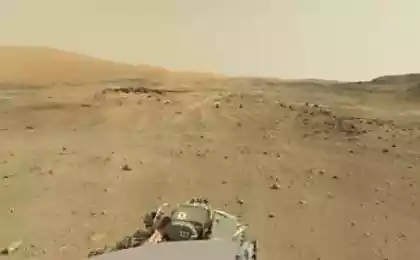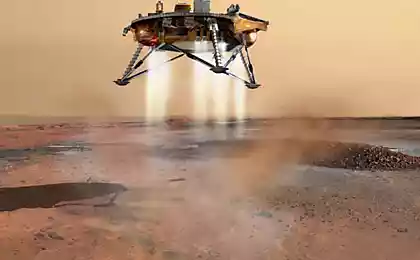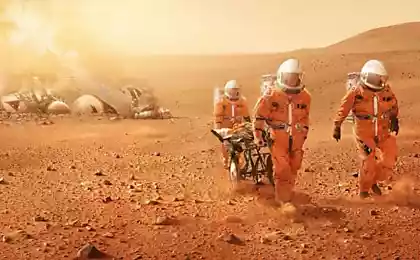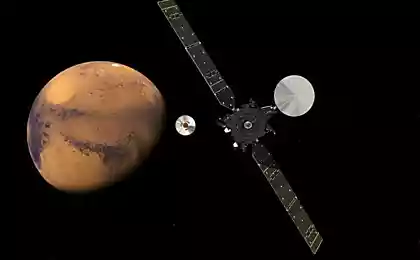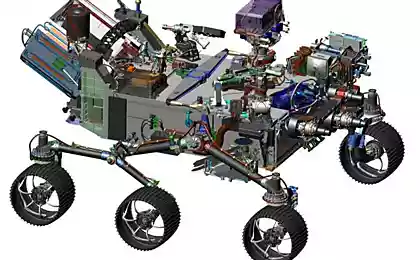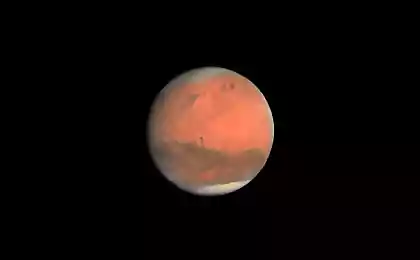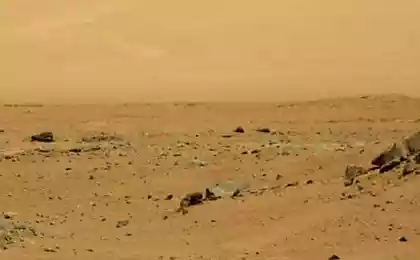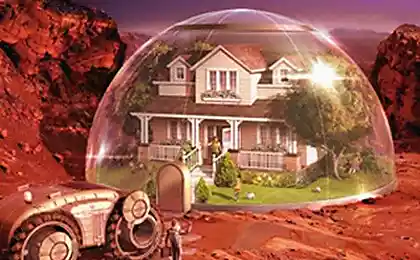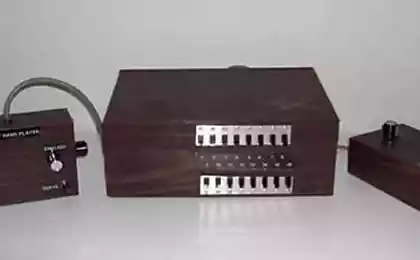1297
Mystery of the Martian water part 2
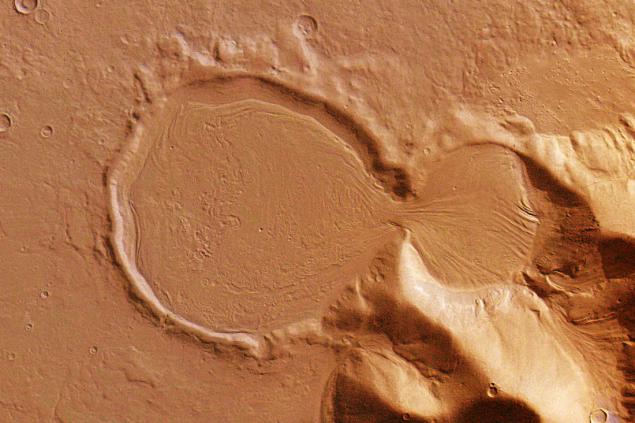
Continue. Home . i>
In 2005, the orbit of Mars was a new modern spacecraft - Mars Reconescance Orbiter. On board mounted high resolution camera HiRise, hyperspectrometer CRISM, radar Sharad ...
HiRise camera removes the surface of Mars with a resolution of up to 26 cm per pixel. Such high-resolution promises to bring the study of the Red Planet to the next level, and expectations of scientists come true. Truly sensational observation became Martian "streams" that are visible on the slopes of the crater in the middle latitudes.

More than one year, scientists argued that they see, but despite all the doubts had to admit - these traces of water reserves. Liquid. At the same time, low pressure on Mars, with rare exceptions, do not allow water to remain in a liquid state at zero degrees or zero temperature. The paradox was resolved by means of salt - brine, ie saturated salt water can remain liquid at minus Celsius. When spring comes, and the daytime temperature rises to -10 -5 degrees Celsius, then brine thawing, and gradually infiltrates the soil slid down the slope, and making it darker. Wet band gradually stretched to the bottom of the crater, while the summer sun does not dry them. A similar process was able to observe in the deserts of Antarctica, which was an additional confirmation of the hypothesis of water.
MRO was able to see the water and where from it is not expected - in the middle latitudes of the northern hemisphere. Scientists have long thought about the cause of significant differences topography of Mars - South hill covered in mountains and craters, and North Plain - smooth.
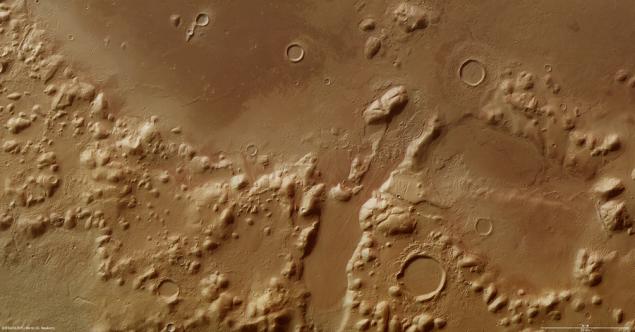
Most cautious researchers suggest that in the north we see lava sea, like the moon. Optimists timidly expressed the hope that in the north of Mars had an ocean that is sleek and landscape, at the same time speaking "cushion" for the falling asteroids and keeping the surface of impact cratering. Circumstantial evidence of the ocean was a lot, but, as we remember, Vking, run down in places, no sign of the sea is not found.
Help optimists came from the sky. Observation of the surface of Mars satellite MRO helped discover fresh impact craters. Recent traces of meteorite impacts in the northern lowlands were unusual. Under a layer of red soil was something very piercing white.
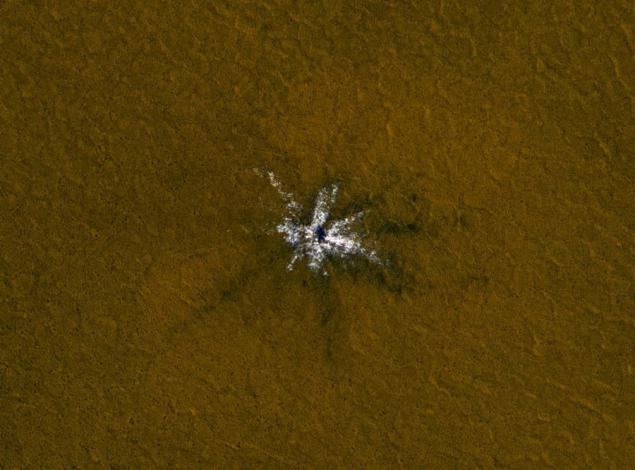
And this white vanished in the open "air" in a few weeks.

As far as we know, conceal traces of dust on Mars is much slower - for months or years. Therefore, no other explanation other than water ice, was not found. Viking excavations were not sufficiently deep, buried 20 centimeters deep, they may be able to get to the Martian ice.
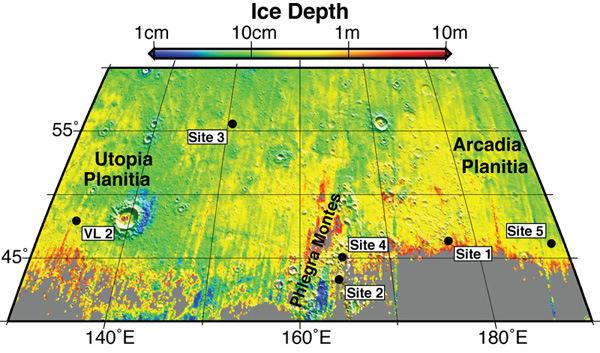
Finally, in 2008, Phoenix descent module landed on the Red Planet in the northern polar latitudes. There, where according to the Mars Odyssey in the surface layer should be up to 60% water. Phoenix flying over water, he was prepared to search for water, and he found her.

Specially equipped bucket, more powerful than the Viking, was able to clean off the superficial layer of dust and detect the white ice. Under the sun the ice began to evaporate and disappear within a few days, but Phoenix had to analyze and soil and water. Sign of life or organic material was found, but the question of the presence of water on Mars was closed once and for all - there.
But the study did not stop there. Further observations from satellites revealed some regions of Mars, far from the poles, but with clear signs of glaciers. These glaciers are observed, for example, in the east valley Hellas.
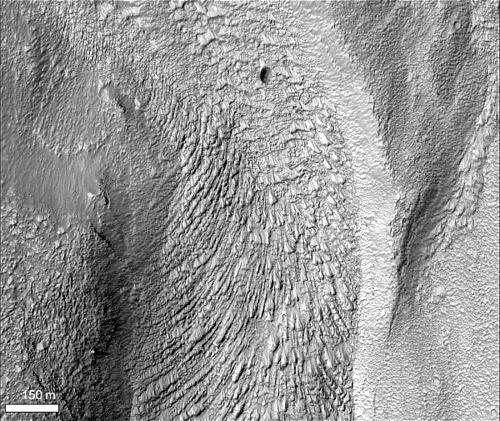
It is believed that at certain periods of life of Mars, its axis shifted to 45 degrees, with the result that, at some time in Hellas shifted south geographic pole. Changing the inclination of the axis led to serious climate change. Polar cap begins to actively evaporate, and snow fell on the new pole, thus began the accumulation of ice.
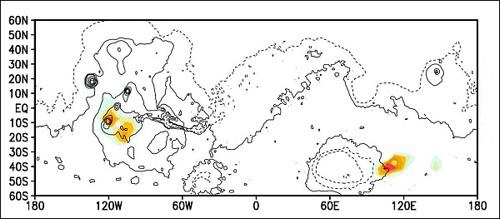
But after a while the pole of Mars returned to the scene and calmed disasters. There is speculation on such a thing could happen relatively recently - about 20 million years ago. When the atmosphere was already quite thin and about any seas and oceans, there was no question - warm and humid period is over one and a half or two billion years earlier.
Mars rover Curiosity, landed in the crater Gale, near the equator, the ice is not found. But he first discovered the river pebbles.

And was able to determine that the soil is contained in the surface of 3 to 6% of water bound at the chemical level. Moreover, the Russian unit DAN possible to determine even the layered nature of the soil. In some areas of the upper layer was "dry" - 3% and lower (within 60 cm, on which "breaks" DAN) "wet" - up to 5%. And somewhere it was the opposite - the top 5%, and in depth - 3%.
SAM gas chromatograph showed that heating the soil up to 400 degrees Celsius to evaporate the water and allows the other person useful gases oxygen, nitrogen, carbon dioxide. But heating up already promotes the release of sulfur and chlorine compounds, which do not contribute to the activity. In one sample, the instrument SAM able to identify even 6% water, and there found nitrates and organics.
In 2015 published the results of two studies related to water. First held from orbit by radar satellites Mars Express and MRO. This time were able to assess deposits in the glaciers in the middle latitudes.
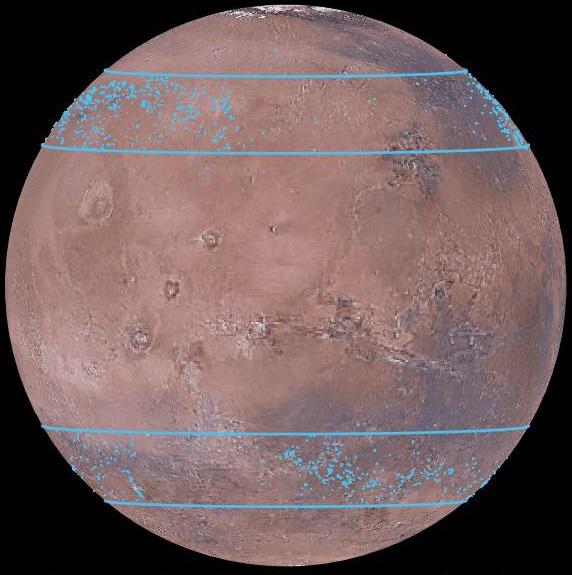
Satellite sensing midlatitude glaciers showed that these water supplies will help to fill one meter in a hypothetical ocean perfectly smooth Mars. Thanks to previous radar investigations failed to calculate that melt the northern and southern polar cap can fill with water for another 22 meters deep perfectly smooth planet the size of Mars. It remains now only to assess the stocks of the northern ocean.
A second study conducted with instruments rover Curiosity. By combining the results of observations of the climate station REMS, data on the content of chemical elements and compounds in the soil from the SAM, and the testimony of the hydrogen concentration of DAN, have come to interesting conclusions.
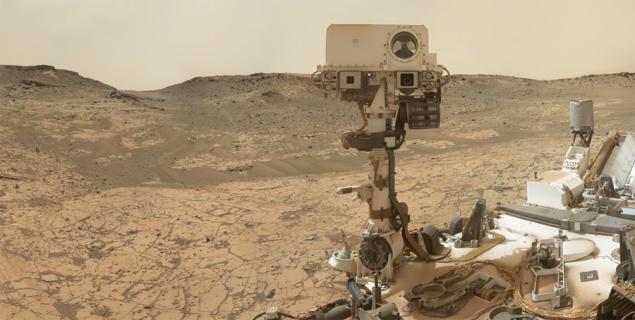
Оказалось, in the fall and spring, during the night of the Martian air relative humidity can reach 100%. A perchlorate contained in the substrate tend to absorb water from the atmosphere. Ie at some point, the salt in the soil will turn into a liquid brine, and there will be exactly what the MRO of satellites from space - will flow "streams". We Curiosity this is not observed - still dry enough at the equator, but to the middle latitudes of moisture should be more.
In addition, the observation Curiosity answer the question, what is the source of seasonal "flows", observed by satellite. Hypotheses that this may be the permafrost or glaciers, but now it is clear that they are not required.
Arising in the night moisture answer the question whether it is possible microscopic life on Mars now. It turns out, is possible. Not just to maintain life in a state of coma, which is possible in open space, namely the active life: reproduction, metabolism, perhaps even evolution. Of course, it is unlikely that there exist local residents, but we can start to look for or output of terrestrial extremophiles, which could colonize Mars, preparing it for terraformed.
Source: geektimes.ru/post/249668/


